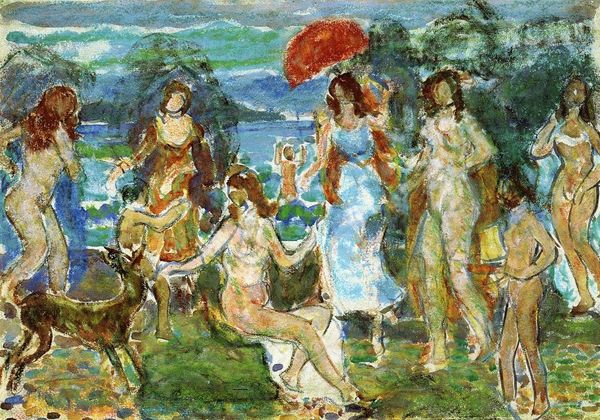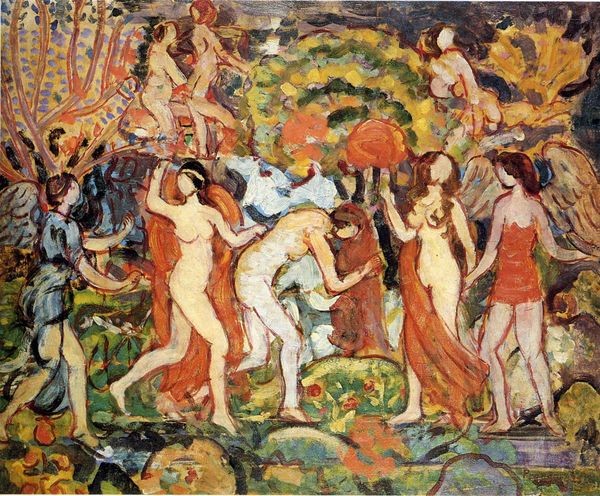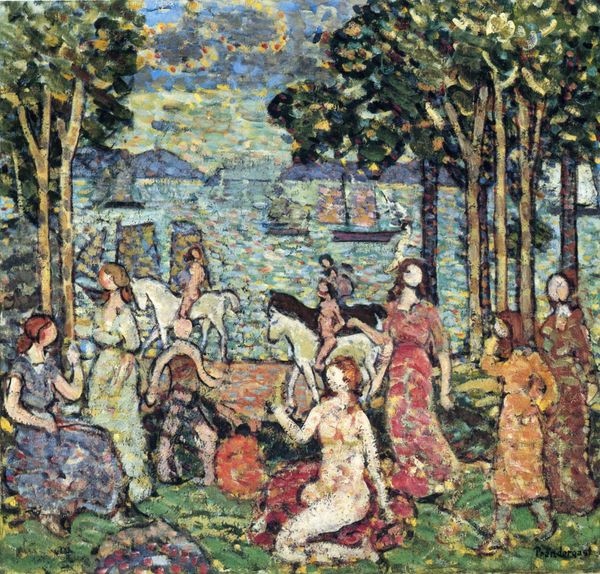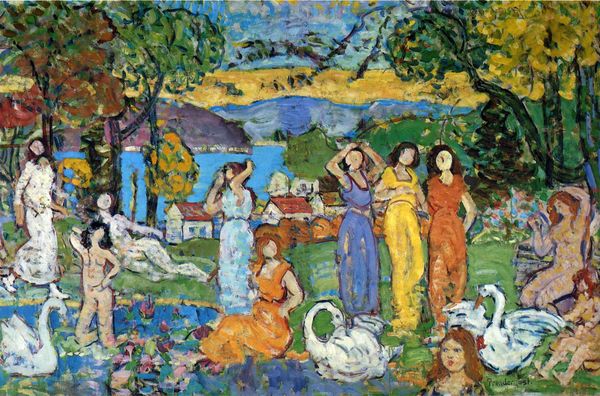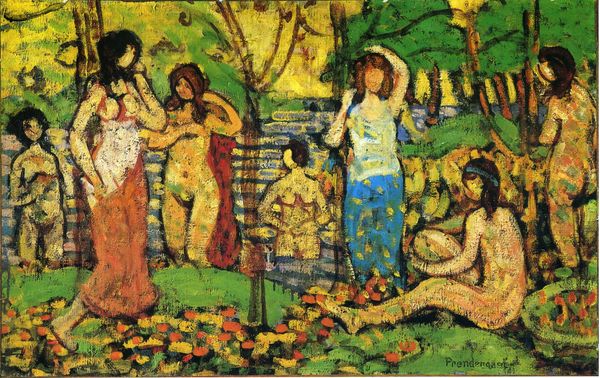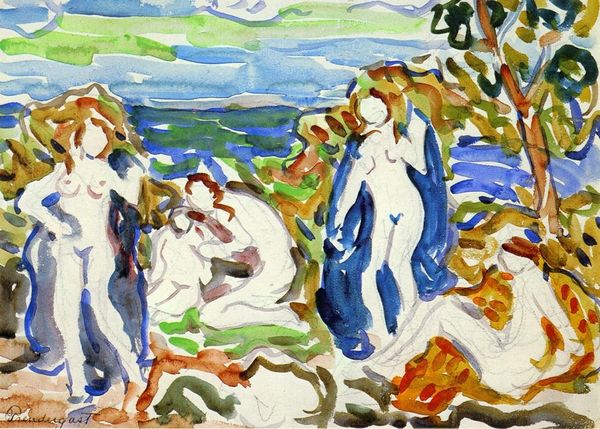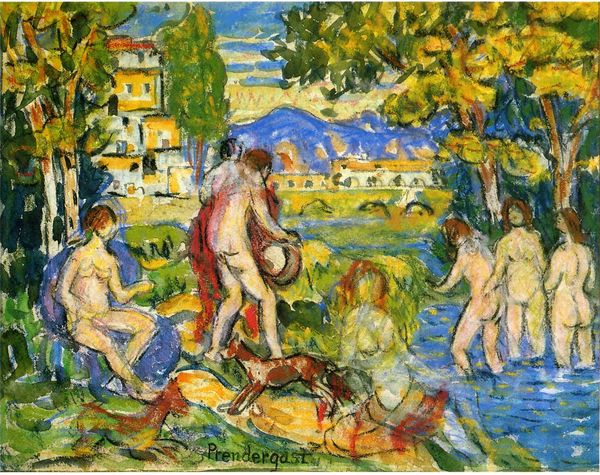
Dimensions: 34.29 x 49.53 cm
Copyright: Public domain
Editor: This is Maurice Prendergast’s "Figures in a Landscape," painted in 1915. The scene shows a group of women in a park-like setting rendered in a very loose, almost dreamlike style. The color palette feels bold and playful. What's your take on this particular painting? Curator: Prendergast was navigating the burgeoning modernist landscape while grappling with his own experiences as a disabled artist, so considering those intersectional dynamics can offer a nuanced reading of "Figures in a Landscape". The apparent frivolity clashes with the underlying currents of early 20th-century societal anxieties, particularly regarding the female body and public space. Does the grouping of figures remind you of any classical depictions? Editor: Now that you mention it, they do remind me a bit of the Three Graces in Renaissance painting but given a modernist spin. The gazes of the women are self-possessed; is this a commentary on female agency at that time? Curator: Precisely. Consider also the era: women were fighting for suffrage and challenging societal norms. Prendergast might be positioning these women as active agents within their environment, even as the "landscape" itself seems a somewhat surreal and undefined space. The flattened perspective and vibrant colors work against traditional, patriarchal notions of landscape painting as passive scenery, right? Editor: Yes, the use of fauvist color really draws my attention to the women, so you read the fauvist language as active agency in this case. How does his identity as a disabled artist further inform our interpretation? Curator: His physical limitations, especially his hearing impairment, possibly heightened his visual sensitivity, but more importantly, they perhaps fueled an outsider perspective that manifested in these unique representational choices and that, perhaps, gave him license to challenge social norms through his work. This understanding makes the work about more than pretty colors and figures; it speaks to the artist's intersectional negotiation of a world not built for him or the women depicted within. Editor: I never considered it that way. I’ve learned so much about the social and historical layers in Prendergast’s painting! Curator: And I found new insight through your observation of the gaze; I hadn't really considered it that deeply before!
Comments
No comments
Be the first to comment and join the conversation on the ultimate creative platform.
